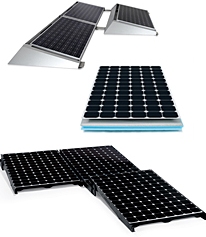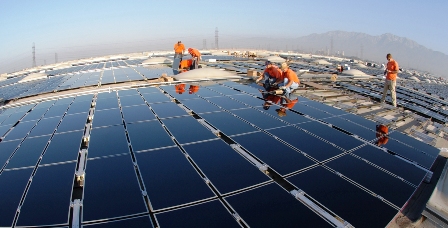
SunPower scores 200MW rooftop PV contract with Southern California Edison
Mar 11, 2010 - Tom Cheyney - pv-tech.org
The most ambitious rooftop solar initiative in the U.S. has taken a decidedly crystalline-silicon turn, as Southern California Edison has awarded a contract to SunPower to supply up to 200MW, or 80%, of the utility’s photovoltaic installation program. First Solar had won the contract to supply the first three projects with its CdTe thin-film panels. Company sources tell PV Tech that the remaining 45MW of capacity in the 250MW, five-year program is still up for grabs and that some of that megawattage could end up in ground-mounted arrays rather than on roofs.
SCE plans to install, own, and operate the distributed solar generating capacity, most of it placed on large warehouse and logistics center roofs in 1-2MW increments. The systems will be connected directly to neighborhood circuits where the leased rooftops are located, according to the utility.
Chosen by SCE because of its greater power density per installation and reduced installation time and cost, SunPower’s T5 solar roof tile system—which integrates a high-efficiency monocrystalline-silicon PV panel, frame, and roof mounting--will be the product of choice.
 SCE spokesman Gil Alexander told PV Tech that since last summer and fall, the utility has been in discussions with “all the leading international panel suppliers” before deciding to go with SunPower. SCE spokesman Gil Alexander told PV Tech that since last summer and fall, the utility has been in discussions with “all the leading international panel suppliers” before deciding to go with SunPower.
The timetable for the commencement of the first SunPower project remains a bit vague, as the utility is finalizing announcements about the leases of various roof spaces. “If the space comes together as we hope, we expect to be installing SunPower panels later this year. We’ll be in a better position to say in a month or so.”
No decision has been made yet on the “multiple or primary inverter suppliers,” although Alexander noted that “all elements of the project [including engineering design and support, installation contractors, et al.] have been receiving intense competitive discussions. Getting the supply chain in order is as important as the leases.”
Once the project schedule begins in earnest, he said that the utility “intends to install 50MW this year and 50MW in each of the next four years. That’s about 20 roofs per year,” although the total number of rooftops could end up between 50 and 100, depending on the size of the roof, generating capacity, and technology deployed. He noted that the 80% to be supplied by SunPower will take up “about 1½ to 2 square miles of roof space.”
“We anticipate having four or five installation projects going at once,” Alexander continued. “Once people are on the roof, it takes about 30-60 days for an installation to be completed.”
One installation on the verge of completion is the third First Solar project, which the SCE spokesman characterized as being “within days of announcing” its location and other details. That system will bring the thin-film PV company’s total installed capacity portion of the utility’s program to approximately 5MW.
As for the remaining 45MW of panels yet to be contracted, Alexander said that the utility is still talking to suppliers and should “complete discussions in the near future, possibly in the spring.”
Not all of that that capacity may actually be installed on roofs—a portion could end up on the ground, opening up the possibility of different technologies such as other thin films or concentrated PV systems.
“The reason for not going further (than 80%) at this point, is that we have authorization from the regulators [California Public Utilities Commission] that some of these installations could be ground mounted,” he explained.
 “On the roof, the weight of the panels is very important, and the generating power per square foot installed is very important. With ground mount, there’s more room, so we can look first to the price per panel. We want to maintain flexibility in various technologies and products with the intent of ending up with the best price for our customers.” “On the roof, the weight of the panels is very important, and the generating power per square foot installed is very important. With ground mount, there’s more room, so we can look first to the price per panel. We want to maintain flexibility in various technologies and products with the intent of ending up with the best price for our customers.”
Comparative performance analyses of the different PV technologies, CdTe versus mono-c-Si to begin with, will not be a “primary consideration,” according to Alexander. “The primary considerations are reliability and the cost to our customers.”
But such analyses are of interest to SCE, which has “taken investment steps, project steps to help emerging [renewable] technologies emerge. We share information with other energy companies and utilities, share learning from test beds on the best knowledge, the best practices,” he said.
Later this month, SCE says it hopes to launch the solicitation for a second track of solar installations that will double the size of its PV program. Regulators previously directed the utility to conduct a competitive solicitation, offering long-term power contracts to independent solar power providers willing to install an additional 250MW.
Eventually, the two installation tracks will add 500MW to the region’s solar-generating capacity— one of the largest U.S. PV programs ever undertaken.

|